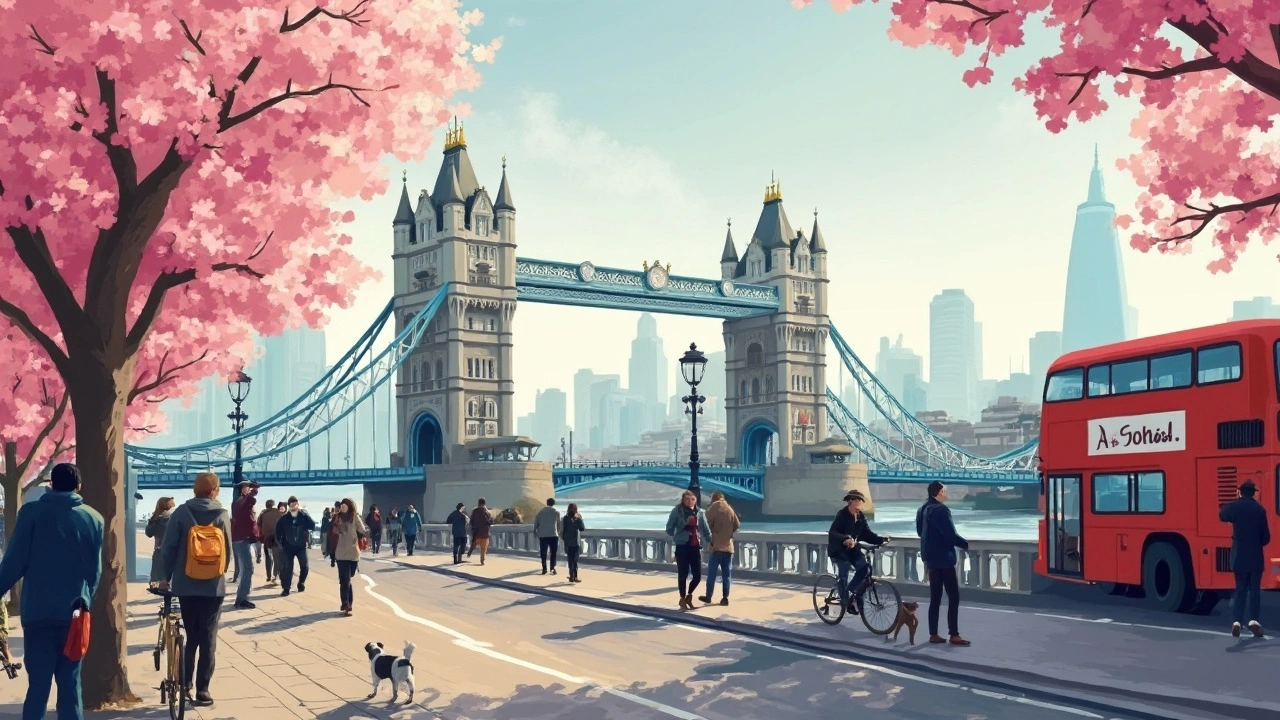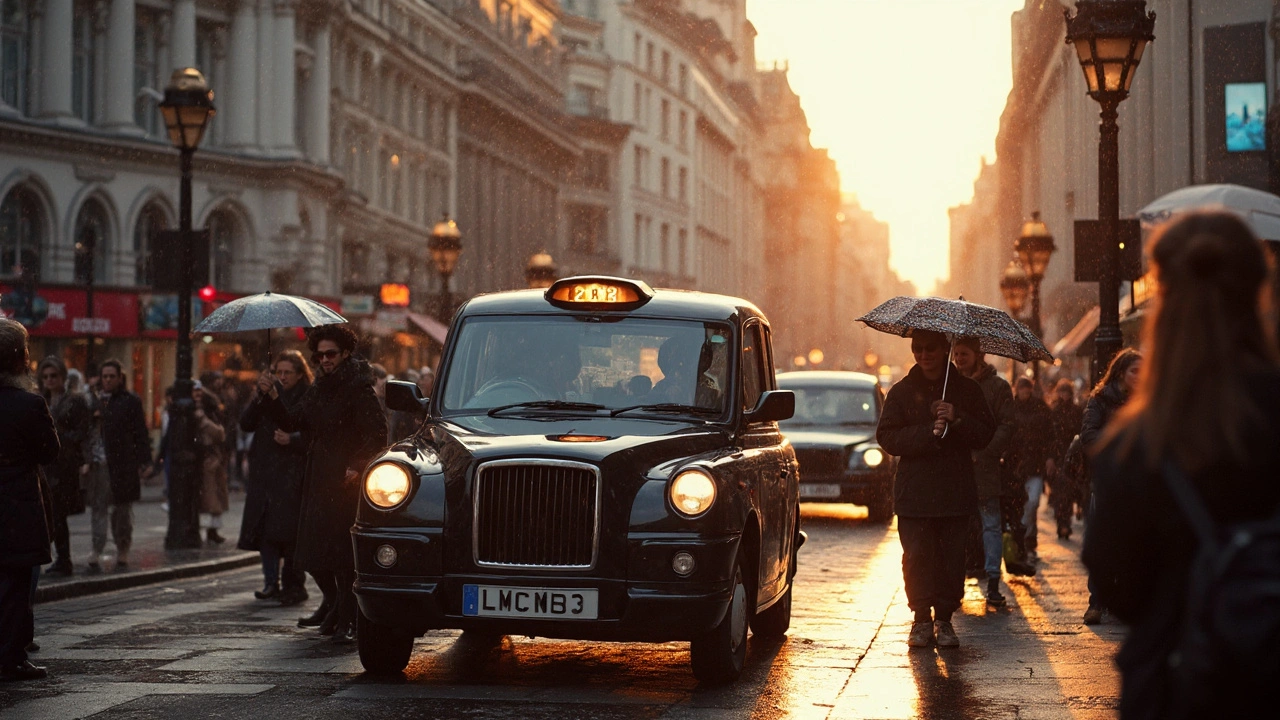
Ask anyone in London about planning a visit to the city’s famous spots, and you’re bound to hear the same thing: timing is everything. Yes, even locals get tripped up by those hordes at the Tower of London or a full-to-bursting Covent Garden on a Saturday. Think you know the quiet times? Well, it pays to look a bit deeper at patterns, not just the obvious school holidays.
If you want to wing it and show up at Buckingham Palace on a sunny Saturday in August, just know you’ll be queuing with half the planet. But there are ways for Londoners to sidestep the worst of the crowds. For instance, nabbing a morning slot at the British Museum—usually around opening—means you get time with the Rosetta Stone before the big school parties swarm in. And if rain is coming (which, let’s face it, is most weeks), don’t cancel your plans. Wet weather often keeps casual day-trippers away, so you can breeze past those Instagrammers vying for the perfect shot at St Paul's.
Public transport makes or breaks your day out, too. Avoid tube changes at Bank or Oxford Circus right at the end of the workday—unless you fancy a real-life game of sardines. Instead, look up Citymapper or the TfL Go app, which both locals and savvy expats swear by. And when it comes to eating near big landmarks, ditch the chains and check out markets like Borough or street food at Maltby Street—they’re where actual Londoners grab lunch between sights.
Knowing when to visit the top places in London can seriously change your whole experience. The pattern is clear: peak times mean long queues and loads of people, while quieter slots give you space to actually enjoy what you came to see. The big London landmarks—think the London Eye, Tower Bridge, and the Natural History Museum—tend to be packed during weekends, school holidays, and whenever there’s sunny weather. Londoners often plan around these by picking odd hours or weekdays, especially during term time.
For example, the London Eye is much quieter just after it opens around 11am Monday–Thursday. The Tower of London is best early on weekdays, before the school groups descend mid-morning. If you love green spaces, avoid Hyde Park at midday on sunny Saturdays when families and runners fill every path. Want to catch Westminster Abbey without the slow shuffle of tour groups? Aim for Wednesdays later in the afternoon—most big groups are gone by then and you get a bit more elbow room.
It’s not just about dodging crowds. Prices can also shift. Some attractions, like The View from The Shard, have cheaper tickets during the first hour after opening or later in the evenings. Museums like the V&A and the Science Museum offer quieter experiences midweek, and many central London galleries have late opening hours on certain days—perfect if you’re working or just need something to do after dinner.
Local travel patterns matter too. Beware of the 8-9:30am and 5-6:30pm crowd on the Underground if you don’t want to fight commuters for space. Walking or hopping on a Santander Cycle between close landmarks can also save time, especially in zones like Westminster and Southbank, where sights are packed together.
Here’s a quick rundown for timing things right:
Visiting London's must-see landmarks takes a bit of strategy, and the best time really depends on what kind of experience you want. Summer brings long opening hours and open-air activities—think sunset views from the London Eye or late-night strolls at the Southbank, iced drink in hand. But summer also means crowds, high ticket prices, and surprise downpours that catch out even the most prepared Londoners. For those who don’t love queues, consider spring or autumn, when the school terms are in and the tourists thin out a bit. Cherry blossom season around St James’s Park in April is a local favourite, with the bonus of milder weather.
Winter gets a bad rep for being grey, but Christmas lights around Oxford Street, the Southbank Winter Market, and ice skating at Somerset House make up for the chill. Plus, key landmarks like the British Museum and the Natural History Museum are indoors—no brolly needed. January is generally the quietest. If you don’t mind the cold, you’ll have a much easier time moving between the big spots. Keep an eye out for annual events too: Notting Hill Carnival in August means giant crowds around West London, so best to avoid nearby landmarks that weekend unless you’re all-in for the party.
| Season | Avg Temp (°C) | Chance of Rain | Crowd Level |
|---|---|---|---|
| Winter (Dec–Feb) | 2–8 | Medium–High | Low |
| Spring (Mar–May) | 7–15 | Medium | Medium |
| Summer (Jun–Aug) | 15–25 | Low–Medium | High |
| Autumn (Sep–Nov) | 9–18 | Medium–High | Medium |
Quick tip: Many ticketed sites switch to "peak" pricing for school holidays and bank holidays, and even free places like the Science Museum can fill their timed entry slots. If you’re hoping to avoid families and groups, aim for a plain Wednesday morning in term-time—you’ll see a different side of the city’s best spots.

If you’ve ever stood in a two-hour queue at Madame Tussauds, you know the pain. Getting into London’s must-see landmarks is much easier with a bit of planning. First up: most big attractions offer skip-the-line or timed tickets on their official websites—don’t bother with third-party resellers, as they often tack on extra fees or dodgy service fees.
The London Eye is busiest between 1pm and 5pm. Booking an early morning or late evening ticket is usually cheaper and a lot less crowded. The Tower of London? Go straight for opening time at 9am, especially midweek outside school breaks. If you live in London or visit often, check out the Merlin Annual Pass—it gives you unlimited year-round access to the London Eye, Madame Tussauds, and more, often paying for itself after two or three visits.
The Oyster card and contactless payments don’t just save money on tube and bus fares—they sometimes give you bundled ticket discounts to attractions. Check the Days Out Guide website for current deals tied to public transport.
| Landmark | Typical Wait (Peak) | Single Entry Price (Adult) | Skip-the-Line/Timed Entry? |
|---|---|---|---|
| London Eye | 60-90 min | £32.50 | Yes |
| Tower of London | 45-60 min | £33.60 | Yes |
| Madame Tussauds | 45-120 min | £33.50 | Yes |
| Westminster Abbey | 30-60 min | £29.00 | Yes |
And here’s something most guides miss: check if a landmark has “late opening” days. The Tate Modern, for instance, stays open until 10pm on Fridays and Saturdays. The crowd is thinner, and you can finish with dinner at a nearby riverside spot like Flat Iron Square instead of fighting for space in a busy cafe at lunchtime.
London never really sleeps, but there are certain times of year when the city cranks things up a notch and its most famous landmarks become the backdrop for huge crowds, parades, and moments you’ll be talking about for ages. When you're planning to see London at its buzzing best, keep these big dates in your diary.
The Notting Hill Carnival takes over West London every August Bank Holiday, turning streets near Portobello Road into the UK’s largest street party. If you’re after colour, music, and Caribbean food, this is the moment. Just brace yourself for jam-packed tubes and book local restaurants weeks ahead. Over in South Bank, the Thames Festival in September transforms the riverfront with live music, markets, and a big parade — perfect for photos of Tower Bridge with festival lights in the background.
New Year’s Eve is another classic. The fireworks above the London Eye draw tens of thousands; tickets sell out fast and the tube runs late into the night. If you’re not keen on big crowds, try watching from Primrose Hill or a rooftop in Shoreditch — some locals swear by restaurants and pubs putting on their own private viewing events.
Wimbledon fortnight in July is a bit of a national obsession. If you can’t score centre court tickets, watching the finals on the big screens at Granary Square or Canary Wharf is just as much fun. People picnic, bring their own strawberries, and yes, you’ll pay a bit more for Pimm’s, but it’s a London tradition.
Here’s a quick look at crowd levels around some top landmarks during London’s headline events:
| Event | Main Area | Usual Crowd Level | Best Local Hack |
|---|---|---|---|
| New Year’s Eve | London Eye | Extremely High | Book restaurants with river views early |
| Notting Hill Carnival | Notting Hill / Ladbroke Grove | Off the scale | Arrive by 10am, leave before sunset |
| London Marathon | The Mall / Westminster | Very High | Walk or rent a Santander Cycle |
| Christmas at Kew | Kew Gardens | Busy, especially weekend evenings | Go on a weekday and book early slots |
If you want to avoid the madness but still soak up the city’s energy, check out smaller festivals or visit landmarks right after events, when the crowds usually thin out and the city feels suddenly calm again. Checking Time Out London’s event calendar, and watching for TfL’s updates about road closures, can save you a lot of hassle. London’s biggest moments aren’t just for tourists — they change how even locals experience the city’s best-known places.
Just because you’re at the big sights doesn’t mean you have to stick to the tourist trail. London is packed with smaller spots just steps away from every major landmark, perfect for locals who want something new or visitors dodging the crowds. Here are some favourites—with specifics you won’t find in every guidebook.
Got the London Eye in your sights? Most people don’t realise how close they are to Leake Street Arches. It's basically an underground tunnel covered in street art, right under Waterloo Station. Banksy painted here first, and now everyone from art students to visiting pros leaves their mark. No ticket needed—just walk in and wander.
Near the Tower of London, skip the usual riverside stroll and check out St Dunstan in the East. This bombed-out church ruin has become a leafy, weirdly peaceful little park. People bring their Pret lunches and actually read books here. Plus, early mornings you’ll have it almost to yourself.
If you're looking for food, Maltby Street Market is only a twenty-minute walk from Tower Bridge. It's packed with artisan doughnuts, grilled cheese, and craft gin—actual local hangouts, not tourist traps. And most food stalls are small businesses, not big brands, so you get proper local flavour.
Next time you’re near one of London’s top attractions, take a quick detour—you’ll get a taste of the city that the hop-on-hop-off buses can’t touch.